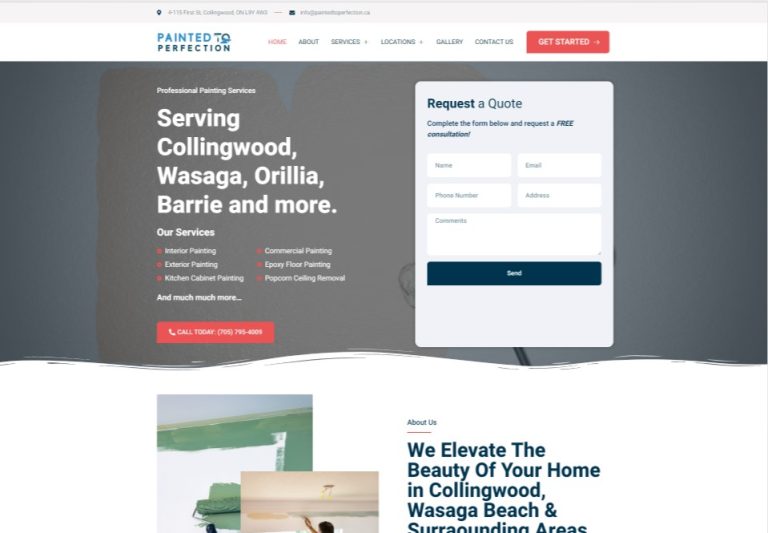
Painted To Perfection, a talented painting company nested in the heart of Collingwood, Ontario. Painted to Perfection, aren’t your average painters; they’re true artists who turn walls into works of art. When you see their handiwork, you’ll understand the passion and dedication they pour into every project. From quaint homes to bustling businesses, Painted To Perfection adds that touch of color and creativity that can completely transform a space.
Our goal was to give the Painted to Perfection website a complete makeover. We aimed to not only make it visually appealing but also set it up in a way that encourages visitors to take action. Our focus was on creating a layout that guides our visitors naturally, making it easy for them to reach out and or explore their portfolio. And, of course, we understood the importance of being found online. That’s why we designed the website with SEO in mind, so that anyone looking for top-notch painters in Collingwood would have no trouble finding them.

The final new website design for Painted To Perfection captures captivating visuals with effortless functionality. The layout has been carefully crafted to guide the user through an immersive journey, making sure they are able to explore the offer services with ease. This thoughtful approach has led to a noticeable uptick in conversions, highlighting how effectively the website can turn casual interest into potential customers.
In terms of SEO, our efforts have yielded impressive results. By meticulously optimizing the content, structure, and keywords on the website, we’ve witnessed a significant increase in our online visibility. As a result, Painted To Perfection now enjoys higher rankings in search engine results, ensuring that they are reaching a wider audience. The perfect harmony between design and SEO has truly paid off, allowing them not only to showcase their craftsmanship but also to expand their clientele. Ultimately, the revamped website stands as a testament to the synergy between creativity and strategy, working together to deliver exceptional outcomes.
